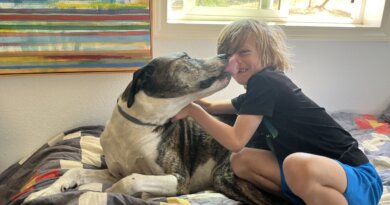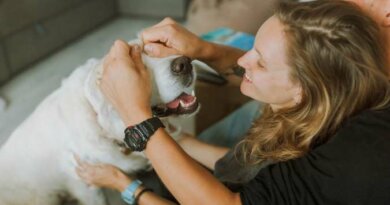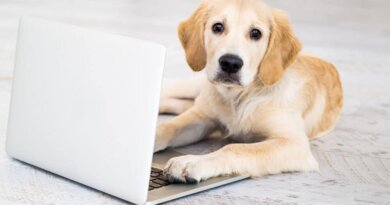Peeing in the house woes? Teach Your Dog to Stop
Stop Your dog from peeing in the house
A Guest Post by Anna Stewart |Last Updated 05-24-2024
Owning a dog is a responsibility and making sure your dog does not pee in the house is just one of those essential tasks of dog ownership.
It is not fun cleaning up after your pet pee on the floor. If you haven’t already tried to train your dog, it is advisable that you try. You should learn to train your small dog quickly and efficiently.
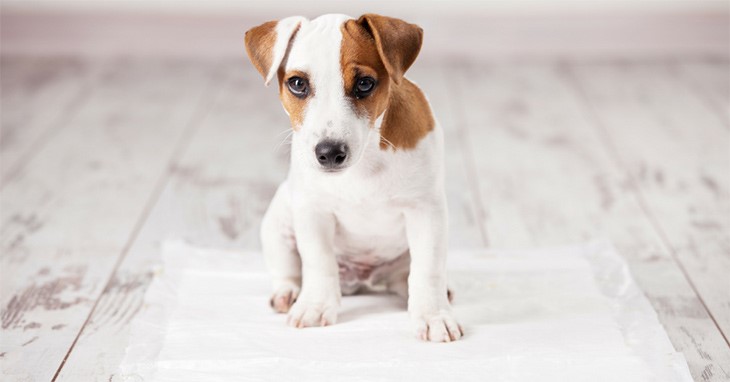
Keep in mind that your dog loves you and wants to please you. So train your dog properly, and there will be no issues. How can you stop your small dog from peeing in the house?
Habits of the Most Successful Dog Parents
Small Dog Place recently did a survey of dog parents who had housetrained their dog. This was just a survey and not a rigorous research study, but it is interesting to note that a few commonalities from the survey emerged.
- Pet parents who started a routine the day the dog or puppy came home were more successful than those that did not.
- Pet parents who purchased a puppy from someone who had already initiated the process housetrained the dog faster.
- Pet parents who had a few days off from work or those that did not work outside the home house trained their dog faster.
- Puppies and dogs that responded favorably to treats or praise were easier to train than those that did not.
Stop Your Dog From Peeing in the House: Pointers:
- Consistency
- Schedules
- Timing
- Know Your Dog’s Behavior
Consistency is the key which means that you will need to keep to a routine for the daily walks and feeding times. Dogs and puppies have a tendency to go to the bathroom shortly after they eat or drink. They are also most likely to eliminate after awaking from a nap or first thing in the morning.
If you time it correctly, you will know fairly accurately when to take them outside. After waking in the morning, take them outside, this also, of course, applies if you have a doggydoor as you want to ensure they go outside, and never pee inside.
Take them out shortly after any meal they have and just before you go to bed. Also, a few occasions in between these are helpful as small dogs have small bladders which make it important that they have opportunities to urinate. Tiny puppies have even smaller bladders.
Puppies need to go about every 2 hours. Older dogs can go for four or more hours, but if you are housebreaking an adult dog, stick to the 2 hour puppy schedule, at least initially.
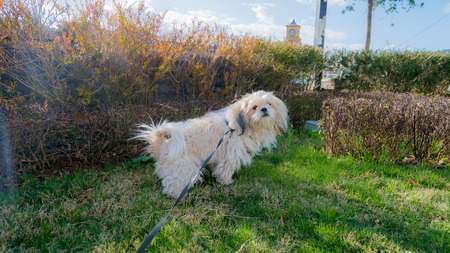 Good Dog
Good DogAccording to Petch.com, a healthy dog will produce 2 ml of urine per kg per hour. To do the math, you first need to convert kg to pounds.
A typical 10-pound small breed dog would weigh 4.5 kg so would produce 9 ml of urine per hour or a total of 216 ml per day. That is roughly 43 teaspoons per day or 0.9 cups of urine.
That might not seem like a lot, but it does end up creating quite a few “accidents” if your dog is peeing in the house.
Always make sure that you are very observant of your dog’s behavior. After a while, your dog will start to show you signs that it needs to relieve itself.
For example, between feedings, your dog may begin to circle and start sniffing the ground. This sniff and circle ritual is one of the best indications that they need to use the bathroom. Remember to be patient and consistent with these methods.
Eventually, your dog may show other behaviors such as sitting by the door patiently until you notice. Other dogs may bark to alert you to allow them to go outdoors to relieve themselves. Still, others may learn how to use bells hung by the door to announce their needs.
Doggie Schedules: Keep Your Dog from Peeing in the House
Take Your Dog Outside to Your Designated Spot
- First thing in the morning
- Shortly after meals and water breaks
- After naps
- Before Bedtime
- Several times in-between
Free Puppy Potty Schedule Chart
Sometimes it helps to keep a housebreaking or potty schedule at least for the first couple of weeks until your schedule becomes firmly established. Click on the image below to get your free puppy potty schedule.
Clean Up Tips
Clean-up and remove dog poop from your carpet, as dogs are creatures of habit, they will return to the scene of the crime if they smell something on the floor surface.
Use floor cleaners that have enzymes because it will eliminate any leftover scents and remove odors from your house. Use artificial chemical-free cleaners as much as possible. Harsh chemicals have poisons that can affect our pets as well as us.
You can even place the “evidence” outside in the garden in the region where you would like them to go. The smell will attract them and remind them to go in the same place each time.
Catch Them In the Act
If you are lucky enough to catch your dog peeing or pooing inside, tell them ‘no,’ and take them outside so they can finish what they had been doing.
As frustrating as you may feel, never use force during an incident because this will only make your dog more confused and withdrawn. Consistency combined with the proper training is the key to house training your dog.
There’s no point telling your dog ‘no,’ after the dog has done the job on your floor. Scolding the dog minutes after the accident doesn’t do any good because they won’t remember what they did or become confused.
Pointing out the urine or feces is also useless. Just do not bother, they may cower or tremble if you get upset, but they are only doing it because of your distress and not because they have any remorse for peeing in the house.
Hint:
If you must scold your dog, do not use your dog’s name. You never want to associate any negative behavior with your dog’s name. That is one reason dog owners have trouble getting their dogs to come to them when called by name.
When Peeing in the House is Due to a Medical Problem
If you have a dog that is housebroken and then begins to have accidents, consider medical problems. According to WebMd, there are many problems that may cause a dog to loose control of his/her bladder:
- urinary tract infection
- weak sphincter muscle
- hormone-related problems after spay surgery
- bladder stones
- diabetes
- kidney disease
- Cushing’s disease
- neurological problems
- abnormalities of the genitalia-can cause urinary incontinence
Even puppies can bladder infections that need medical attention. Rule any of these issues out before you begin to retrain your dog. Very old dogs may also have limited mobility due to arthritis which makes it more difficult to get outside to their favorite spot in a timely manner.
Behavioral Issues That May Cause Peeing in the House
Some timid puppies and dogs have a problem with submissive urination. One way some dogs try to show submission is through urinating. This can be very frustrating especially when they urinate on themselves as well as the floor.
Excitement urination is another one of those issues but instead of try to act submissive, the dog is just so excited, he can’t control himself. Both of these behaviors can appear as if the dog is peeing in the house but the treatments are different and using the training techniques described in this article won’t work.
What TO do and What NOT to do For Your Dog That is Peeing in the House
As a recap, there are methods that will make your job easier and those that will encourage your dog to keep peeing in the house.
DO:
- Establish a schedule and stick to it (consistency)
- Observe and know your dog’s behavior and habits
- Chose a spot in the garden where you want your dog to go
- Praise and positive reinforcement such as treats
DON’t
- Leave it up to the dog to go out on his own
- Scold, Yell, Hit,or Punish
- Punish after the fact – dogs do not understand why you’re angry
You can reward your dog with treats, love and kind deeds. But let them know you are pleased and this will help them to understand that there are proper places to use the restroom.
Dogs love to please you, if they can equate your happiness with them going outdoors to go to the bathroom, they will do exactly that. It just might take just a little time for them to work it out. Positive reinforcement is always the answer-punishment isn’t.
About the Author
Hi. I’m Anna Stewart and I am the author of How to Stop a Dog From Peeing in the House.
I’m the founder of Pup How.com. I grew up with dogs around me and pets have always been my passion. My burning desire is to deliver valuable knowledge and experience to others sharing the same interest with me.
My blog is built to share all of my useful tips and advice regarding dog’s health, dog food and dog training which would be helpful for pet lovers. Explore my blog to find out the best care for your dogs.
Does This Article Deserve Your Thumbs Up?
We always appreciate your support and encouragement. Your thumbs up means so much to us. Please like this article.
If you find this page or any page on Small Dog Place Helpful, or Useful in anyway, I’d love it if you would click the small heart found on the bottom right of each page.
You can also share or bookmark this page — just click on the:

Free Monthly Newsletter
Sign Up for Our Free Newsletter and get our Free Gift to You.
my E-book, The Top 10 Mistakes People Make When Choosing a Dog (and how to avoid them)


